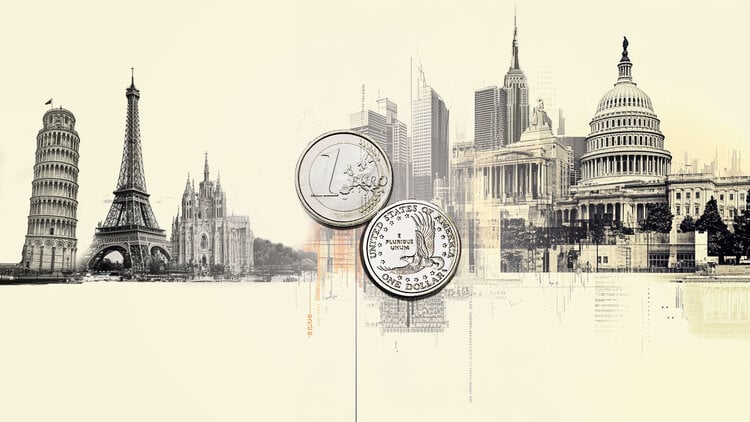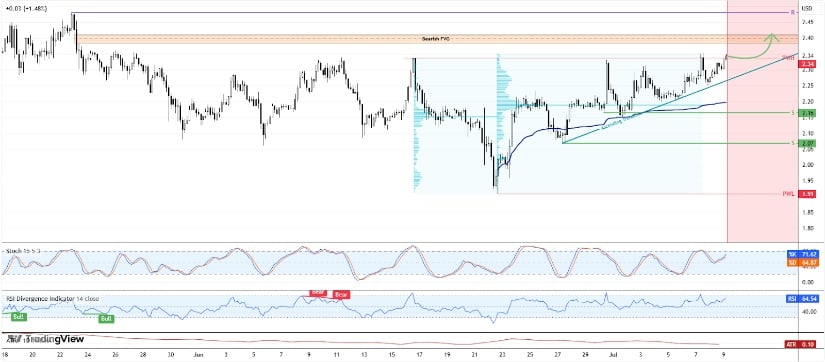Category: Forex News, News
Euro closes in on key support area
- EUR/USD trades near 1.1700 in the European session on Wednesday.
- The technical outlook points to a bearish tilt in the short term.
- The Federal Reserve will publish the minutes of the June policy meeting.
EUR/USD struggles to hold its ground early Wednesday and trades in negative territory at around 1.1700 after posting small gains on Tuesday. The near-term technical outlook highlights a lack of buyer interest.
Euro PRICE This week
The table below shows the percentage change of Euro (EUR) against listed major currencies this week. Euro was the weakest against the US Dollar.
| USD | EUR | GBP | JPY | CAD | AUD | NZD | CHF | |
|---|---|---|---|---|---|---|---|---|
| USD | 0.55% | 0.38% | 1.75% | 0.64% | 0.42% | 1.00% | 0.35% | |
| EUR | -0.55% | -0.15% | 0.95% | 0.07% | -0.07% | 0.44% | -0.21% | |
| GBP | -0.38% | 0.15% | 1.08% | 0.24% | 0.09% | 0.60% | -0.17% | |
| JPY | -1.75% | -0.95% | -1.08% | -0.82% | -1.07% | -0.50% | -1.29% | |
| CAD | -0.64% | -0.07% | -0.24% | 0.82% | -0.20% | 0.36% | -0.42% | |
| AUD | -0.42% | 0.07% | -0.09% | 1.07% | 0.20% | 0.61% | -0.26% | |
| NZD | -1.00% | -0.44% | -0.60% | 0.50% | -0.36% | -0.61% | -0.77% | |
| CHF | -0.35% | 0.21% | 0.17% | 1.29% | 0.42% | 0.26% | 0.77% |
The heat map shows percentage changes of major currencies against each other. The base currency is picked from the left column, while the quote currency is picked from the top row. For example, if you pick the Euro from the left column and move along the horizontal line to the US Dollar, the percentage change displayed in the box will represent EUR (base)/USD (quote).
The US Dollar (USD) continues to benefit from safe-haven flows as investors assess the latest talks surrounding the US trade regime.
US Commerce Secretary Howard Lutnick said late Tuesday that another 15 to 20 tariff letters are expected to be announced in the next two days. Meanwhile, US President Donald Trump noted that the BRICS members will be subject to 10% tariff rate and added that they will be introducing tariffs on pharmaceuticals and semiconductors soon. Regarding the trade negotiations with the EU, Trump said that the EU is treating them “very nicely” and added that they are “probably two days off” from sending the EU letter.
In case the EU and the US manage to reach an agreement until Trump unveils the tariff decision on European imports, the Euro could gather strength with the immediate reaction. On the other hand, investors are likely to refrain from positioning themselves for a steady recovery in the Euro, while the uncertainty lingers.
Later in the day, the Federal Reserve (Fed) will publish the minutes of the June policy meeting. Nevertheless, investors could ignore this publication and remain focused on trade-related headlines.
EUR/USD Technical Analysis
The Relative Strength Index (RSI) indicator on the 4-hour chart stays below 50 and EUR/USD continues to trade below the 20-period and the 50-period Simple Moving Averages (SMA), which made a bearish cross on Tuesday.
On the downside, 1.1700-1.1690 (static level, round level, lower limit of the ascending channel) aligns as a key support area ahead of 1.1660 (100-period SMA) and 1.1600 (static level, round level). Looking north, resistance levels could be seen at 1.1750-1.1760 (20-period SMA, 50-period SMA), 1.1800 (round level, static level) and 1.1830 (static level).
Euro FAQs
The Euro is the currency for the 19 European Union countries that belong to the Eurozone. It is the second most heavily traded currency in the world behind the US Dollar. In 2022, it accounted for 31% of all foreign exchange transactions, with an average daily turnover of over $2.2 trillion a day.
EUR/USD is the most heavily traded currency pair in the world, accounting for an estimated 30% off all transactions, followed by EUR/JPY (4%), EUR/GBP (3%) and EUR/AUD (2%).
The European Central Bank (ECB) in Frankfurt, Germany, is the reserve bank for the Eurozone. The ECB sets interest rates and manages monetary policy.
The ECB’s primary mandate is to maintain price stability, which means either controlling inflation or stimulating growth. Its primary tool is the raising or lowering of interest rates. Relatively high interest rates – or the expectation of higher rates – will usually benefit the Euro and vice versa.
The ECB Governing Council makes monetary policy decisions at meetings held eight times a year. Decisions are made by heads of the Eurozone national banks and six permanent members, including the President of the ECB, Christine Lagarde.
Eurozone inflation data, measured by the Harmonized Index of Consumer Prices (HICP), is an important econometric for the Euro. If inflation rises more than expected, especially if above the ECB’s 2% target, it obliges the ECB to raise interest rates to bring it back under control.
Relatively high interest rates compared to its counterparts will usually benefit the Euro, as it makes the region more attractive as a place for global investors to park their money.
Data releases gauge the health of the economy and can impact on the Euro. Indicators such as GDP, Manufacturing and Services PMIs, employment, and consumer sentiment surveys can all influence the direction of the single currency.
A strong economy is good for the Euro. Not only does it attract more foreign investment but it may encourage the ECB to put up interest rates, which will directly strengthen the Euro. Otherwise, if economic data is weak, the Euro is likely to fall.
Economic data for the four largest economies in the euro area (Germany, France, Italy and Spain) are especially significant, as they account for 75% of the Eurozone’s economy.
Another significant data release for the Euro is the Trade Balance. This indicator measures the difference between what a country earns from its exports and what it spends on imports over a given period.
If a country produces highly sought after exports then its currency will gain in value purely from the extra demand created from foreign buyers seeking to purchase these goods. Therefore, a positive net Trade Balance strengthens a currency and vice versa for a negative balance.
Written by : Editorial team of BIPNs
Main team of content of bipns.com. Any type of content should be approved by us.
Share this article:









